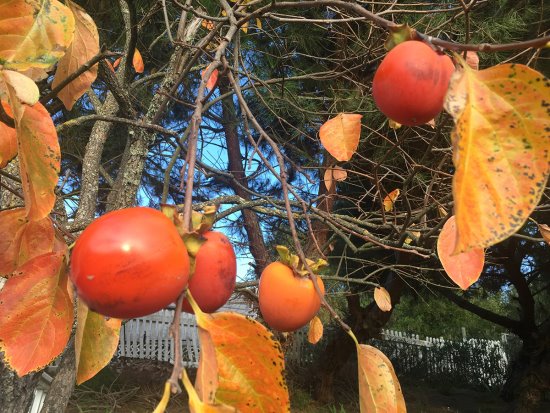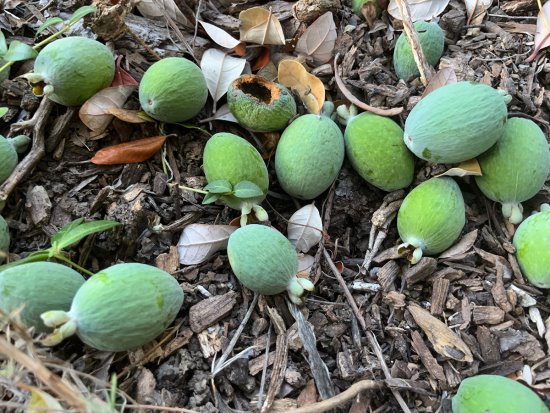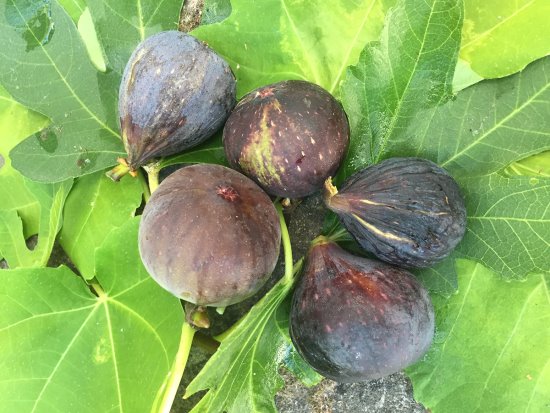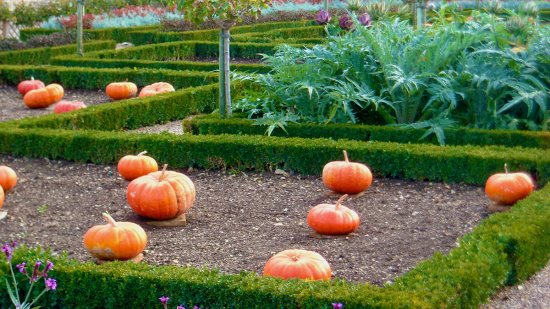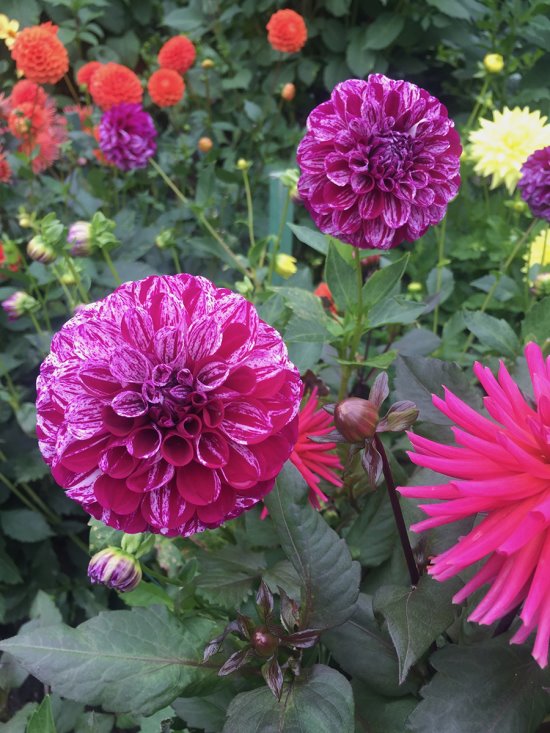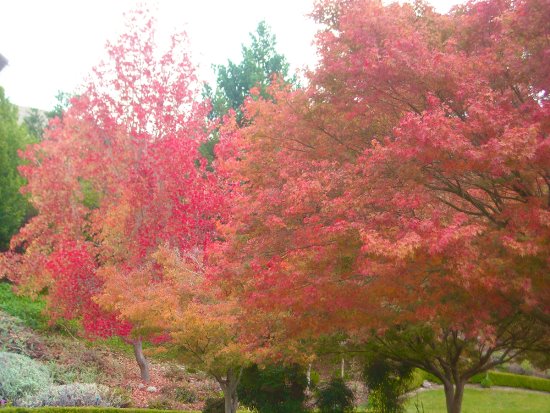 |
|
|
Liquid amber and Japanese maple trees with their fabulous fall foliage. Photos Cynthia Brian
|
|
|
|
|
|
"Do what you can for as long as you can, and when you can't, do the next best thing!" Chuck Yeager
 One of the many lessons I've learned from my 40-plus years in the entertainment industry is that the show must go on! Except for the COVID-19 pandemic, actors go to work despite any personal circumstances. I've put on my acting mask when I've had walking pneumonia, broken bones, and deaths in the family. I even left my hospital bed to shoot a commercial two days after giving birth. My new baby girl went to work with me!
One of the many lessons I've learned from my 40-plus years in the entertainment industry is that the show must go on! Except for the COVID-19 pandemic, actors go to work despite any personal circumstances. I've put on my acting mask when I've had walking pneumonia, broken bones, and deaths in the family. I even left my hospital bed to shoot a commercial two days after giving birth. My new baby girl went to work with me!
 As a hands-on gardener, I have always pushed through the pain to get everything done on time.
As a hands-on gardener, I have always pushed through the pain to get everything done on time.
 Whether it was digging trenches, installing French drains, cutting dead limbs, building stairways, hauling gravel, pulling weeds, pushing a lawnmower, or planting twenty flats of ice plant, I did it with joy and with ease.
Whether it was digging trenches, installing French drains, cutting dead limbs, building stairways, hauling gravel, pulling weeds, pushing a lawnmower, or planting twenty flats of ice plant, I did it with joy and with ease.
 Everyone knows that gardening is terrific exercise. The muscles of our backs, shoulders, legs, arms, thighs, and wrists get an intense workout. Because of all the bending, lifting, and twisting (BLT), lower back and neck pain are common after a strenuous gardening chore. When I start aching, my remedy is to soak in a hot bath with Epsom salts. That usually works.
Everyone knows that gardening is terrific exercise. The muscles of our backs, shoulders, legs, arms, thighs, and wrists get an intense workout. Because of all the bending, lifting, and twisting (BLT), lower back and neck pain are common after a strenuous gardening chore. When I start aching, my remedy is to soak in a hot bath with Epsom salts. That usually works.
 Not this time.
Not this time.
 Somehow this week I exceeded the limits of my body and ended up writhing on the floor with painful spasms beyond anything I've ever experienced. The spinal surgeon admonished me, "No BLT!" but as a gardener how can we eliminate bending, lifting, and twisting?
Somehow this week I exceeded the limits of my body and ended up writhing on the floor with painful spasms beyond anything I've ever experienced. The spinal surgeon admonished me, "No BLT!" but as a gardener how can we eliminate bending, lifting, and twisting?
 I'm using voice dictation to write this column because I'm bedridden, and like in show business, publishing must go on. The photos included are not of injuries but joyful fall favorites. Because I don't want you to experience a similar painful situation to mine, I'm including tips on how to avoid injuries in the garden. As soon as I heal, I will be following my own advice!
I'm using voice dictation to write this column because I'm bedridden, and like in show business, publishing must go on. The photos included are not of injuries but joyful fall favorites. Because I don't want you to experience a similar painful situation to mine, I'm including tips on how to avoid injuries in the garden. As soon as I heal, I will be following my own advice!
 Ways to Avoid Injuries in the Garden
Ways to Avoid Injuries in the Garden
 1. Wear appropriate clothing including sturdy boots, gloves, and a hat. My favorite piece of gardening clothing is an apron with pockets where I keep a few hand tools handy.
1. Wear appropriate clothing including sturdy boots, gloves, and a hat. My favorite piece of gardening clothing is an apron with pockets where I keep a few hand tools handy.
 2. Apply sunscreen and wear sunglasses during the daylight.
2. Apply sunscreen and wear sunglasses during the daylight.
 3. Prevent tick bites by treating your clothes with permethrin. I have had excellent success with buying clothing and sprays from www.InsectShield.com.
3. Prevent tick bites by treating your clothes with permethrin. I have had excellent success with buying clothing and sprays from www.InsectShield.com.
 4. Wear protective eye gear when operating any mechanical tool such as a chainsaw, weed eater, lawn mower, blower, or other machines.
4. Wear protective eye gear when operating any mechanical tool such as a chainsaw, weed eater, lawn mower, blower, or other machines.
 5. Before jumping into a big task, warm your body up with a brisk walk, jumping jacks, stretching, dancing, or gentle movements. When you have completed your gardening tasks for the day, perform simple stretches for five minutes.
5. Before jumping into a big task, warm your body up with a brisk walk, jumping jacks, stretching, dancing, or gentle movements. When you have completed your gardening tasks for the day, perform simple stretches for five minutes.
 6. Carry a bottle of water with you. Rehydrate often. It's very easy to get dehydrated while gardening, especially on a hot day. Dehydration puts extra pressure on the cardiovascular system and can be fatal.
6. Carry a bottle of water with you. Rehydrate often. It's very easy to get dehydrated while gardening, especially on a hot day. Dehydration puts extra pressure on the cardiovascular system and can be fatal.
 7. Use the correct tools for each task to prevent injuries.
7. Use the correct tools for each task to prevent injuries.
 8. Protect your knees with a cushion or knee pads. An old pillow that is washable works well for me. Move the pillow close to where you will be working so as not to stretch your torso.
8. Protect your knees with a cushion or knee pads. An old pillow that is washable works well for me. Move the pillow close to where you will be working so as not to stretch your torso.
 9. Minimize repetitive movements that put stress on one area of your body. Take a short break every 15 minutes. Stand, stretch, sit, relax, drink water, and breathe.
9. Minimize repetitive movements that put stress on one area of your body. Take a short break every 15 minutes. Stand, stretch, sit, relax, drink water, and breathe.
 10. Avoid BLT as much as possible.
10. Avoid BLT as much as possible.
 a. Bending: Instead of bending over to weed, sit on a stool or a bucket. Keep your back straight while you lean forward to pull weeds. Don't twist to the side. Always move as close to an area that you want to clean as possible.
a. Bending: Instead of bending over to weed, sit on a stool or a bucket. Keep your back straight while you lean forward to pull weeds. Don't twist to the side. Always move as close to an area that you want to clean as possible.
 b. Lifting: Protect your back by using your legs and hips. Stand close to the object you are lifting and spread your legs widely for added support. Keep your back straight. Bend with your knees, not your waist, and tense your stomach muscles as you lift. Use your core strength. Don't bend forward as you lift. Use your knees and hips to do the lifting.
b. Lifting: Protect your back by using your legs and hips. Stand close to the object you are lifting and spread your legs widely for added support. Keep your back straight. Bend with your knees, not your waist, and tense your stomach muscles as you lift. Use your core strength. Don't bend forward as you lift. Use your knees and hips to do the lifting.
 c. Twisting: When sweeping, digging, raking, shoveling, and other chores that require using a long-handled object, minimize the strain to your back by keeping your posture aligned with the object. Don't turn to the side or twist in any direction as that increases the strain on your back, shoulders, and neck. Pivot your feet when necessary and keep your body parts moving in the same direction.
c. Twisting: When sweeping, digging, raking, shoveling, and other chores that require using a long-handled object, minimize the strain to your back by keeping your posture aligned with the object. Don't turn to the side or twist in any direction as that increases the strain on your back, shoulders, and neck. Pivot your feet when necessary and keep your body parts moving in the same direction.
 11. Listen to your body. Our bodies are wondrous miracles that usually warn us when we are overusing a muscle or doing too much. It's natural to be a bit sore after a day of intense gardening. Know your limits and don't go past them. If painful symptoms persist or get worse, consult your physician.
11. Listen to your body. Our bodies are wondrous miracles that usually warn us when we are overusing a muscle or doing too much. It's natural to be a bit sore after a day of intense gardening. Know your limits and don't go past them. If painful symptoms persist or get worse, consult your physician.
 12. Remember tomorrow is another day. You don't have to do everything on your "to-do" list in one interval. Gardening is a marathon that we can never outrun. Gardening requires patience. Spread tasks out over several days.
12. Remember tomorrow is another day. You don't have to do everything on your "to-do" list in one interval. Gardening is a marathon that we can never outrun. Gardening requires patience. Spread tasks out over several days.
 Gardening is therapeutic but can also be dangerous when precautionary measures are not followed. Be extra careful when using a ladder. Hire a professional to assist with tasks that you can no longer perform. Ask for help when needed.
Gardening is therapeutic but can also be dangerous when precautionary measures are not followed. Be extra careful when using a ladder. Hire a professional to assist with tasks that you can no longer perform. Ask for help when needed.
 One of my favorite stories in my book, "Chicken Soup for the Gardener's Soul" chronicled a couple in their 70s who loved to garden but because of weakened muscular systems embraced Chuck Yeager's quote. One morning when the wife spotted her husband lying flat on his stomach under an apple tree, she scurried to help. On closer inspection, she saw he had a trowel in his hand. Exasperated, she yelled, "What are you doing?" The husband replied, "The next best thing!"
One of my favorite stories in my book, "Chicken Soup for the Gardener's Soul" chronicled a couple in their 70s who loved to garden but because of weakened muscular systems embraced Chuck Yeager's quote. One morning when the wife spotted her husband lying flat on his stomach under an apple tree, she scurried to help. On closer inspection, she saw he had a trowel in his hand. Exasperated, she yelled, "What are you doing?" The husband replied, "The next best thing!"
 In my mind, I'm still in my 30s, but, alas, my body has aged. I, too, find myself doing the next best thing. This injury that I've suffered has taught me to diligently heed my own advice. There is a silver lining to my agony: Because the show must go on, I wrote this article to help you avoid my mistakes.
In my mind, I'm still in my 30s, but, alas, my body has aged. I, too, find myself doing the next best thing. This injury that I've suffered has taught me to diligently heed my own advice. There is a silver lining to my agony: Because the show must go on, I wrote this article to help you avoid my mistakes.
 This is the next best thing!
This is the next best thing!
 Stay healthy, follow the safety protocols, ask for help, and observe Chuck Yeager's advice: "Do what you can for as long as you can, and when you can't, do the next best thing!"
Stay healthy, follow the safety protocols, ask for help, and observe Chuck Yeager's advice: "Do what you can for as long as you can, and when you can't, do the next best thing!"
 Have a safe and happy Halloween. Make sure to vote to ensure democracy prevails.
Have a safe and happy Halloween. Make sure to vote to ensure democracy prevails.
 Happy Gardening. Happy Growing.
Happy Gardening. Happy Growing.
|

